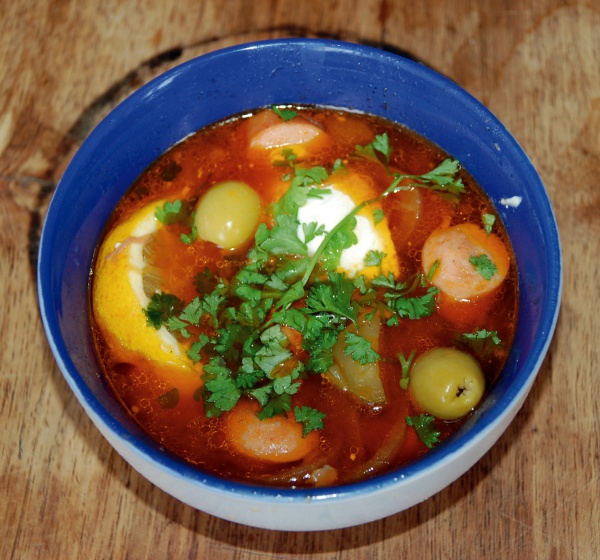Facts About Solyanka
Solyanka is a hearty and flavorful soup that is a staple in Russian and Ukrainian cuisine and widely enjoyed throughout the former Soviet Union and Eastern Bloc countries, including East Germany. This beloved dish comes in three main varieties: meat, fish, and mushroom. Despite these variations, all versions share common ingredients such as pickled cucumbers with brine, cabbage, salted mushrooms, potatoes, sour cream (known as smetana), and dill.
The preparation begins by cooking the pickled cucumbers in their brine, creating a tangy base before incorporating other ingredients.
Meat Solyanka: This version is rich with a mix of finely chopped beef, ham, sausages, and chicken breast. It also includes cucumber pickles, tomatoes, onions, olives, capers, allspice, parsley, and dill, all simmered together in a robust broth.
Fish Solyanka: Instead of meat, this variation features fish such as sturgeon, salmon, and freshwater crayfish. A splash of lemon juice imparts a fresh, zesty flavor.
Mushroom Solyanka: For this vegetarian option, cabbage is first sautéed in butter with vinegar, tomatoes, cucumber pickles, and brine. It is then layered with mushrooms and onions and briefly baked with breadcrumbs and butter for a comforting finish.
In East Germany, particularly in regions like Brandenburg, Mecklenburg-Vorpommern, Saxony, Saxony-Anhalt, Thuringia, and the eastern part of Berlin, solyanka has become a cherished dish. It is available in restaurants and even canned in grocery stores, where it is known as "Soljanka." The soup's popularity in East Germany dates back to the period when Soviet troops were stationed there, making it a common menu item in East German eateries. Even German Chancellor Angela Merkel, who grew up in East Germany, is known to have a soft spot for solyanka.

 Latvia
Latvia